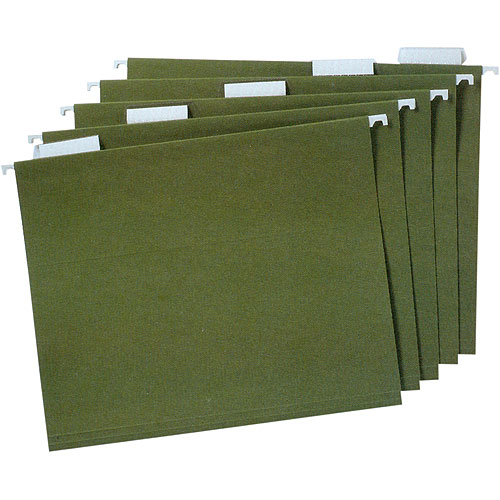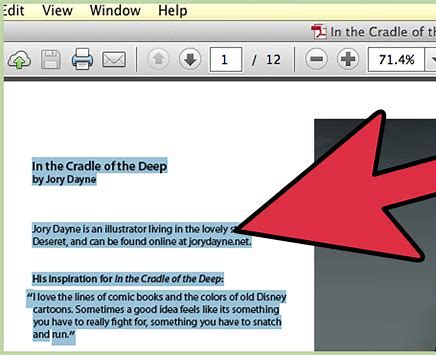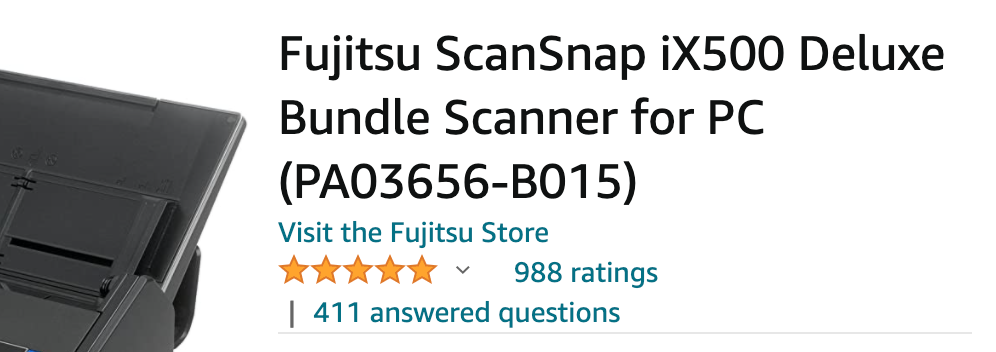ScanSnap ix500 Scanning Speed and Document Processing Workflow
If you’ve ever played with the Getting Things Done system, you may have heard David Allen’s excited advice for getting your paperwork organized: a filing system, and automatic labeler.
One of the hardest parts of a paperwork filing system is the nomenclature. If you just have files that are labeled “A-Z”, you can never remember – did you put your car insurance information under “C” for Car? “I” for insurance? “G” for Geico?

Figuring that out is an annoying process. It means manually skimming through (at least) each of those folders.
So, the Getting Things Done approach is simpler – label a new folder with “Geico Car Insurance”. As you skim through your folder tabs, you’ll see that and not have to dig in other folders.
That’s a great philosophy, and I stuck with it for a while. However, I declared “paperwork filing bankruptcy” a few years ago. Taking my filing box out, filing paperwork, creating new labels – it doesn’t sound painful, but it was enough that I instead adopted the “sedimentation approach”. In a filing cabinet drawer, old bills are on the bottom, new bills are on the top. When you need to find a bill or document, you spend an annoyingly large amount of time digging through it.
You organize the REALLY important stuff, but most other stuff just goes in the pile.

In any case, this approach isn’t exactly optimal. Even with the clearly labeled system, I am well and truly in trouble if I want to find the little receipt from some electronics store that I forget from 2 years ago that had the purchase information about several things – only one of which I care about.
This is becoming an increasingly common sense of dissatisfaction, and the “home paperless office” has recently started becoming a viable answer.
The idea behind the “paperless office” is that you scan in all of your documents / paperwork, have them digitized, and software automatically recognizes the text in those documents through OCR (optical character recognition). Nowadays, most software stores your documents in searchable PDFs – the kind of PDF that lets you select text, but also shows the original document in full fidelity.

Once you’ve gone through this process, you can use software that acts like a virtual filing cabinet to search through your paperwork, or use the built-in search capabilities of Windows.
To get a feel for the “paperless office” approach, I first downloaded a trial of Abbyy Fine Reader. I used my current flatbed scanner, scanned in a few bills (flipping each page so I get both sides, pushing “Scan” each time), and watched the PDFs get generated and recognized into Windows. From there, the power is amazing – you can search for nearly any text in the document. You know that huge 50 page car insurance policy? The software has absolutely no problem finding a random word from page 38.
I was completely sold on this being the way to manage my paperwork. But the scanning. Oh, the horrible scanning.
Fortunately, there’s an answer to that unbelievable pain. Document scanners have arrived for that purpose. Unlike your multi-function printer / flatbed scanner combo, these things are designed for one thing: scanning documents. Quickly, efficiently, and no fuss.
In this world, there’s a clear line of champions – the Fujitsu ScanSnap line of document scanners. They scan 50 pages per minute, double sided, and have great text recognition capabilities.
When looking around for reviews, I couldn’t believe the amount of love customers had for a freaking document scanner.

As I roamed the web for reviews of their newest model – the ScanSnap IX500 - I continually stumbled on blogs that said things like this:
I’ve been using the previous model, the ScanSnap S1500 for almost 4 years now. I liked it so much that I bought a second one. To me, it completely transformed the concept of going paperless: from painful and time consuming to fun and even cool. (…)
That said, I bought the iX500 as soon as I learned it was available on Amazon.
Reviews of the IX500 are even more enthusiastic:

Without further ado, I got the ScanSnap ix500 document scanner the other day in an attempt to tame the vast piles of paperwork sedimentation. And no surprise, this thing is fast. I’ve spent the last few nights scanning in paperwork, and have been averaging about 100 documents per hour. Most of the time is spent unfolding paper.
One thing I couldn’t find a good example of when researching the ScanSnap iX500 was its scanning speed and document processing workflow. So, I recorded a quick two minute example last night, and uploaded it. Enjoy!
I’ve also blogged an example of the ScanSnap scanning paper and bringing tabular data into Excel here: http://www.leeholmes.com/blog/2013/03/09/scansnap-ix500-scanning-into-excel/
